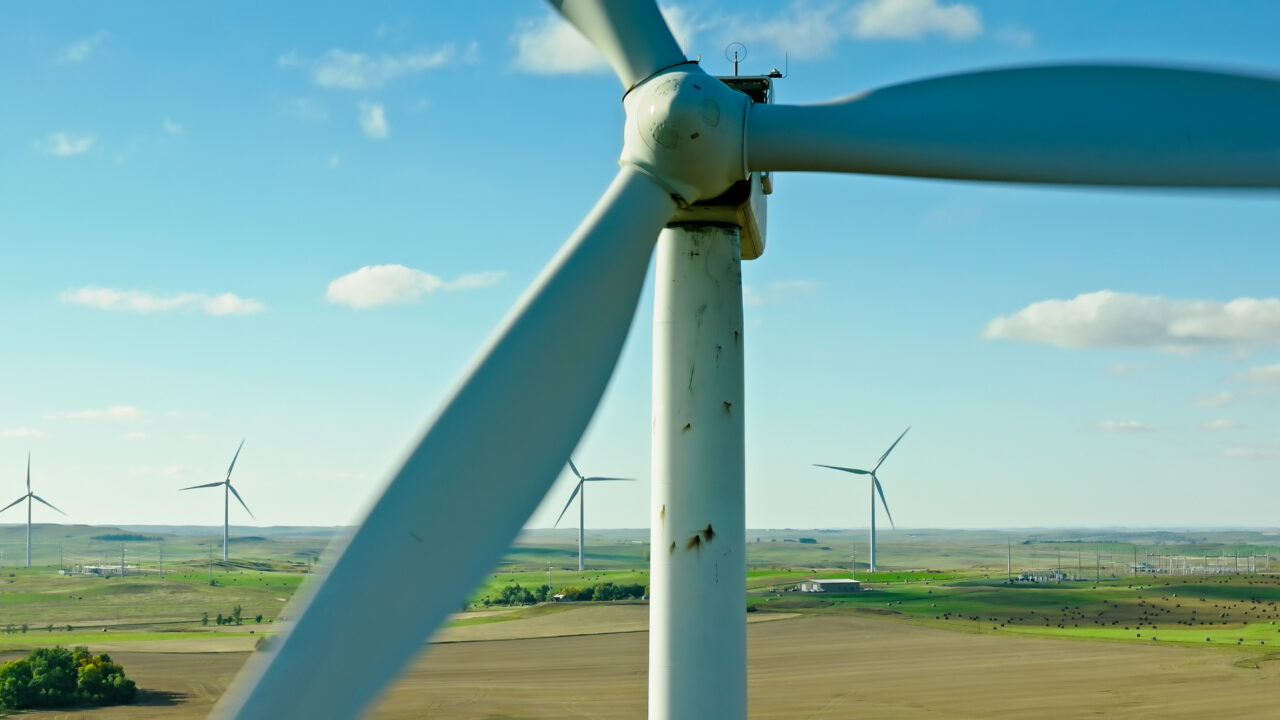Stay Informed
"*" indicates required fields
Blog

Don’t Believe the Hype: Wind and Solar Aren’t Cheap
Renewable energy—specifically wind and solar energy—has its own hidden costs.
“If you take a grid or a system and grow the renewables penetration, you will raise the price of it,” said Energy Secretary Chris Wright.
As electricity prices continue to rise, advocates for “clean” energy claim switching from natural gas and coal to solar and wind will save money on your utility bills.
But nothing could be further from the truth: The Green New Deal-style policies pitched by environmentalists will only increase energy costs and force households and businesses to shell out more money when their monthly bills arrive in the mail.
A closer examination of wind and solar reveals that these purportedly cost-effective energy sources incur far more hidden costs than environmentalists claim.
Intermittency
There are two types of energy: baseload and intermittent. Baseload power runs continuously and predictably, meeting electricity demands despite fluctuations in use. Intermittent sources, such as wind and solar power, are the exact opposite: inconsistent, unreliable, and weather-dependent.
“You never know if these energy sources will actually be able to produce electricity when you need it,” writes Wright in a recent New York Post op-ed.
Unless the sun is shining or the wind is blowing, solar and wind energy cannot provide the always-available energy needed to power the grid. Without favorable weather conditions, solar and wind are useless.
Renewable energy advocates often brag that the Levelized Cost of Electricity (LCOE) for wind and solar—the standard measurement used to calculate the total expense to build and operate an energy source over its lifetime—is lower than gas.
However, LCOE doesn’t account for intermittency. To compensate for their intermittency, solar and wind energy rely heavily upon costly storage. Research demonstrates that when factoring in this costly factor, wind’s LCOE increases by 10 to 15 percent.
Subsidies
Also not accounted for are the subsidies and tax credits that prop up wind and solar. Wind and solar have received 48 and 168 times more subsidies per unit of electricity generated than oil and gas, respectively. Without these subsidies, these “green” sources couldn’t compete.
Ultimately, subsidies distort market pricing. The subsidized LCOE for wind and solar can be as low as $15/MWh and as high as $75/MWh. If unsubsidized, the LCOE increases to a range of $37/MWh to $86/MWh. Other studies have suggested even higher costs.
These subsidies also amount to corporate welfare, propping up a booming industry of uncompetitive businesses nationwide. Since 2000, the solar industry employment has grown by 2,700 percent, and the number of companies has increased elevenfold.
“As with all forms of cronyism, energy subsidies benefit politically connected businesses at the expense of taxpayers who do not notice the effects enough to demand changes,” writes Dr. Brent Bennett of the Texas Public Policy Foundation.
Mandates
In addition to subsidies, government mandates for increased solar and wind power distort the overall costs.
Many states employ “renewable portfolio standards,” which require utility-scale electricity producers to generate a certain percentage of their output from renewable sources, such as wind and solar.
Pennsylvania’s renewable portfolio standard—the Alternative Energy Portfolio Standards (AEPS)—requires 18 percent of the commonwealth’s electricity to originate from sources like wind and solar.
AEPS’s compliance costs—the expenses incurred by electricity providers to comply with the mandates—were more than $700 million in 2024 alone. These are costs that producers pass on to households and businesses.
Gov. Josh Shapiro has proposed an alternative to AEPS: the Pennsylvania Reliable Energy Sustainability Standard (PRESS). PRESS is AEPS on steroids, requiring 50 percent of Pennsylvania electricity to originate from renewable sources. If implemented, PRESS would add $155 billion in new energy costs by 2035, according to analysis by the Commonwealth Foundation.
Somebody has to pay for these compliance costs, and it is always households and businesses.
Intense Land and Infrastructure Needs
“As you deploy more renewables, you’re basically building a whole separate grid,” said Energy Secretary Wright.
Wind and solar can only ramp up production with more land. To make more solar power, you need more solar panels. To make more wind power, you need more windmills. This is how we end up with acres-long solar and wind farms that consume valuable real estate and require more transmission infrastructure.
The land needs of solar and wind are wildly disproportionate compared to other energy sources.
To match what nuclear energy can do in 1 square mile, solar would need about 15 square miles to come close. Meanwhile, wind, which is far more land-dense, requires more than 200 square miles to match that nuclear output. (Again, this doesn’t factor in intermittency.)
Without significant land, wind and solar cannot meet peak electricity demands.
Moreover, renewables require significantly more infrastructure, such as transformers. Solar and wind rely on step-up transformers, which, according to the National Renewable Energy Laboratory (NREL), “convert low-voltage electricity generation into high-voltage electricity for long-distance transmission. The uptick in solar and wind energy—with the added strain of electrical vehicle charging stations—has generated an “unprecedented demand for transformers.” NREL estimates that transformer capacity will need to increase by 160 percent to 260 percent to meet this need by 2050. That amounts to about $1.15 trillion in new infrastructure costs, according to IMPLAN.
Wind and solar energy appear cheaper when considering traditional costs, such as fuel, construction, and maintenance. However, their hidden costs reveal that the full price is far higher than advertised. When considering all factors, “green” alternatives cannot match the reliability, efficiency, or cost-effectiveness of baseload energy like nuclear, coal, or natural gas.
The bills may be subsidized, but someone always pays.
Connect With Us
Email Sign Up
"*" indicates required fields